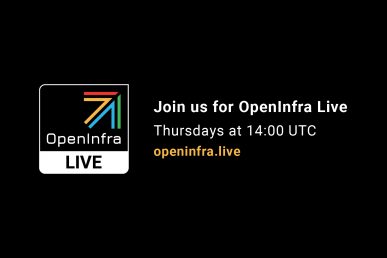The OpenStack Foundation announced in April 2019 that its Ironic software is powering millions of cores of compute all over the world, turning bare metal into automated infrastructure ready for today’s mix of virtualized and containerized workloads.
Some 30 organizations joined for the initial launch of the OpenStack Ironic Bare Metal Program, and Superuser is running a series of case studies to explore how people are using it.
StackHPC provides specialist consultancy services around the convergence of HPC and cloud. The company dedicates significant effort to upstream development of Ironic for scientific computing use cases.
Why did you choose OpenStack Ironic for bare-metal provisioning?
StackHPC’s technical team has world-leading expertise in the use of OpenStack cloud infrastructure for scientific computing. Our clients in technical computing often have very different priorities for trade-offs between performance and flexibility. Ironic stands at a point where extreme performance is needed as the overriding priority. We work to develop solutions in which Ironic is used in flexible ways, enabling clients to exploit the major advantages offered by open infrastructure without sacrificing the performance they require.
We also use Ironic as a standalone service called Bifrost in Kayobe, our open-source deployment tool. (Kayobe is an open-source bare metal OpenStack deployment framework that builds on Kolla-Ansible to add hardware provisioning and infrastructure-as-a-service capabilities.) Used this way, Ironic provides the minimal subset of OpenStack needed to support deployment of private cloud control planes using Kolla and Kolla-Ansible.
What was your solution before implementing Ironic?
The concept of the HPC-enabled cloud predates StackHPC — we’ve been pursuing the perfection of this paradigm from day one. StackHPC has been both users (and developers) of Ironic from the very beginning. Ironic’s potential was apparent from the outset and our team has been active in shaping some aspects of its evolution.
The first contribution of our team members was very simple – a power driver to enable Ironic to control smart power strips for powering servers. We needed this because our lab at the time was very basic and didn’t have hardware equipped with baseboard management controllers.
Over time, the team has contributed to a range of more challenging areas. For example, we were active in the development of multi-tenant network isolation and improved support for bare metal in Magnum. Most recently we’ve been doing some really powerful work around deep reconfiguration of bare metal (eg, redundant array of independent disks (RAID) and basic input/output system (BIOS) setup driven by the requirements of the image or flavor of the instance being deployed. More on that in a session from the Summit here.
We’re now at the point where Ironic is developing world-leading capabilities and it’s exciting for StackHPC to be a part of that.
What benefits does Ironic provide your users?
Ironic enables our clients to deploy on-premise high-performance computing infrastructure using the same methods they would use to deploy infrastructure in the cloud. This is driving a revolution in research computing infrastructure management.
Our clients are diverse and span a wide range of domains, but are united by a requirement for high-performance cloud. Many of the use cases are breathtaking in their ambition and their enthusiasm for a challenge rubs off on us. Bare metal – yet specialized to the workload – is the best tool for achieving these goals.
What feedback do you have for the upstream OpenStack Ironic team?
Ironic is easily the most exciting area in which OpenStack is developing today and I don’t think we have any specific feedback other than to keep up the good work!
Stig Telfer, StackHPC CTO, also co-chairs the Scientific Special Interest Group and there’s a great relationship between the SIG the Ironic team. The active members of the Scientific SIG have provided user stories for Ironic that have influenced the implementation of powerful features. In turn, the Ironic team has been so helpful and supportive of the Scientific SIG. It’s a close connection that has yielded many benefits.
Learn more
You’ll find an overview of Ironic on the project Wiki.
Discussion of the project takes place in #openstack-ironic on irc.freenode.net. This is a great place to jump in and start your ironic adventure. The channel is very welcoming to new users – no question is a wrong question!
The team also holds one-hour weekly meetings at 1500 UTC on Mondays in the #openstack-ironic room on irc.freenode.netchaired by Julia Kreger (TheJulia) or Dmitry Tantsur (dtantsur).
Stay tuned for more case studies from organizations using Ironic.
- Exploring the Open Infrastructure Blueprint: Huawei Dual Engine - September 25, 2024
- Open Infrastructure Blueprint: Atmosphere Deep Dive - September 18, 2024
- Datacomm’s Success Story: Launching A New Data Center Seamlessly With FishOS - September 12, 2024

)










